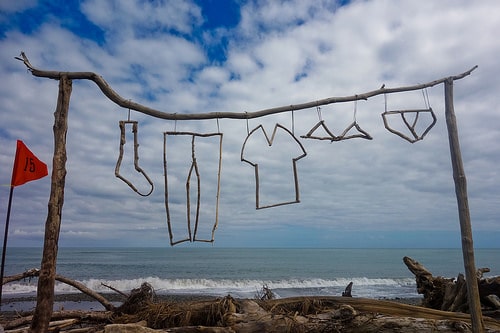This article will cover how plastics and nylons from laundry water can cause clogging in a drain field. Regard for the environment has long been discussed and debated for years. Many companies and organizations have long made efforts in making sure that the environment is not harmed. Improvements in manufacturing processes are implemented and improved so as not to harm the surrounding bodies of water, land masses, and aerial territories. On a smaller scale, homeowners have resorted to environment friendly ways to care for their homes. Property components such as the septic system are vital elements that should be well taken care of. Just like the surrounding environment, the septic system should always be free of pollution. It may sound ironic but this is true. Even if the septic system is responsible for collecting and treating wastewater, it should be free of non-biodegradable materials such as plastics and nylons.
As you may know, plastic is an accidental product that has greatly helped ma y industries all over the world through the years. Parts of furniture, appliances, automobiles, fabrics, and other equipment are made of plastic. Plastic is a moldable material that could perfectly suit many small crevices in various apparatus or cloths. That is why it is highly regarded and mass manufactured. As your household uses plastic materials, your septic system continues to be in danger of clogging.
Clogging is a common problem in septic systems. The septic system is the wastewater treatment system in your property composed of the septic tank and the drain field. The septic tank is the residence of the anaerobic bacteria that primarily break down the solid waste materials in the wastewater. The tank separated the wastewater into three layers—the scum (top layer, lightweight waste), the effluent (middle clear layer), and the sludge (bottom heavy layer or waste. The sludge stays at the bottom so that the solid wastes would not escape into the drain field. The drain field is where the effluent is treated further and then purified before it is released into the surrounding environment.
Plastics and nylons can make their way to the drain field through laundry water or greywater. This is possible if you don’t have a dry well or a greywater system that caters to the greywater from the showers, drains, dishwashers, and washing machines. If you do have greywater systems, the greywater your household produces will be treated and recycled for reuse in flushing toilets and watering plants. If you don’t have a greywater system or a dry well, the septic system receives all the laundry water from your washing machine. Since clothes have plastics and nylons in the form of fibers and trinkets. These could conveniently enter the septic tank, stay there, and accumulate. Plastic and nylons are non-biodegradable materials. They cannot be broken down by the anaerobic bacteria. As more water enters the septic tank, the plastic and nylon bits are pushed into the drain field. The bits of plastic that flow into the drain field cannot be broken down by the aerobic bacteria. They will just stay in the drain field to clog it. This will result to the interruption of the wastewater treatment process. The new batch of untreated effluent will not go through the proper channels anymore. This will then result to septic backups, flooding, and drain field overflows.
To prevent plastics and nylons from damaging the drain field, additional filters should be installed in the outlet pipe of the washing machine and in the inflow pipe of the septic system. Filters should also be installed in the outflow pipe so that the drain field could remain safe. Knowing how plastics and nylons from laundry water can cause clogging in a drain field requires understanding when to check the filters as well. This can be accomplished by regular maintenance and checking by your septic expert.
It is your responsibility to make sure that your drain field functions optimally. This way, you will be safe from costly septic repairs and replacements in the future.
